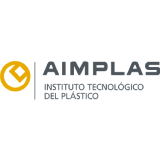Get to know the 7 types of plastic and their characteristics
Since its invention in the 1950s, plastic has become a popular and commonly used material worldwide due to its low cost, versatility and durability. However, the massive use of plastics has also raised concerns about environmental pollution. Plastic is a non-biodegradable material that takes hundreds of years to decompose and can cause irreparable damage to the environment and wildlife. Knowing the different types of plastics and their characteristics can help consumers make more informed choices about their use and proper disposal. In this article, we will explore the seven types of plastics and their characteristics.

Plastic is one of the most widely used materials worldwide due to its versatility and ease of production. However, not all plastics are the same. There are different types of plastic, each with their own specific characteristics and purposes. In this article, we will explore the 7 most common types of plastic and what the triangle with a number found on plastic packaging means.
What does the triangle with a number on plastic packaging mean?
You have probably seen the triangle with a number on many plastic containers. This symbol is called the “Resin Identification Symbol” and was created by the Society of the Plastics Industry in 1988 to help identify different types of plastic. The number inside the triangle indicates the type of plastic used to make the object.

Types of plastics
Plastic number 1: PET
Plastic number 1, also known as PET (polyethylene terephthalate), is commonly used in beverage bottles, food packaging, textiles and fibres. It is a transparent, lightweight and strong plastic that is easy to recycle. However, it is also prone to degradation from exposure to heat and sunlight, which can release harmful chemicals.
Plastic number 2: HDPE
Number 2 plastic, also known as HDPE (high-density polyethylene), is used in a wide variety of products, including milk bottles, shopping bags and pipes. It is a tough, durable plastic that is easy to recycle. However, it can also be difficult to break down and can release toxic chemicals when burned.
Plastic number 3: PVC
Plastic number 3, also known as PVC (polyvinyl chloride), is used in products such as pipes, windows and wall coverings. It is a hard, tough plastic that is resistant to weathering and chemicals. However, it is also prone to degradation from exposure to heat and sunlight, which can release toxic chemicals. In addition, PVC can be difficult to recycle and can release toxic chemicals when burned.
Plastic number 4: LDPE
Plastic number 4, also known as LDPE (low-density polyethylene), is used in products such as shopping bags, food packaging and pipes. It is a tough, flexible plastic that is easy to recycle. However, it is also prone to degradation from exposure to heat and sunlight, which can release toxic chemicals.
Plastic number 5: PP
Plastic number 5, also known as PP (polypropylene), is used in products such as food packaging, medicine bottles and toys. It is a strong, durable plastic that is easy to recycle. However, it can also be difficult to break down and can release toxic chemicals when burned.
Plastic number 6: PS
Plastic number 6, also known as PS (polystyrene), is used in products such as disposable cups and plates, meat trays and takeaway food packaging. It is a lightweight, strong plastic that is easy to manufacture and recycle. However, it is also prone to degradation from exposure to heat and sunlight, which can release toxic chemicals. In addition, PS can be difficult to recover.
Plastic number 7: other plastics
Plastic number 7 is a category that includes all other types of plastics not found in categories 1 to 6. This can include plastics such as polycarbonate (PC), acrylonitrile butadiene styrene (ABS) and other plastics that are not easy to identify. Unlike plastics in categories 1 to 6, number 7 plastics may be more difficult to recycle due to non-uniformity in their chemical and physical composition. Some number 7 plastics may also contain hazardous chemicals, such as bisphenol A (BPA), which can be released into the environment and have harmful effects on human health and wildlife. It is therefore important to exercise caution when using and disposing of category 7 plastics and to choose safer alternatives where possible.

What can I do to reduce my use of #7 plastics?
Reducing the use of #7 plastics is important to minimise environmental impacts and protect human health. Here are some ways you can reduce your use of #7 plastics:
- Avoid buying products that contain #7 plastics: Opt for products that are made from safer and more sustainable materials, such as glass, stainless steel, wood or biodegradable materials.
- Use reusable alternatives: Instead of using disposable number 7 plastic products, such as plastic plates and cups, use reusable alternatives, such as glass or stainless steel plates and cups.
- Choose BPA-free products: If you must use number 7 plastic products, make sure they are labelled as BPA-free. This chemical is known to be hazardous to health and can be released in food and drinks that are stored in plastic containers.
- Recycle properly: If you must use number 7 plastic products, be sure to recycle them properly. Seek information about recycling programmes in your community and follow the guidelines for recycling #7 plastics.
- Support companies that use sustainable materials: Choose to buy products from companies that care about the environment and use sustainable materials in their products. By doing so, you are supporting a shift towards a more sustainable future. Overall, reducing the use of plastics is an important part of a more sustainable and environmentally friendly lifestyle. By taking simple steps, such as choosing reusable alternatives and supporting sustainable businesses, you can make a significant difference in reducing the use of #7 plastics in your everyday life.













